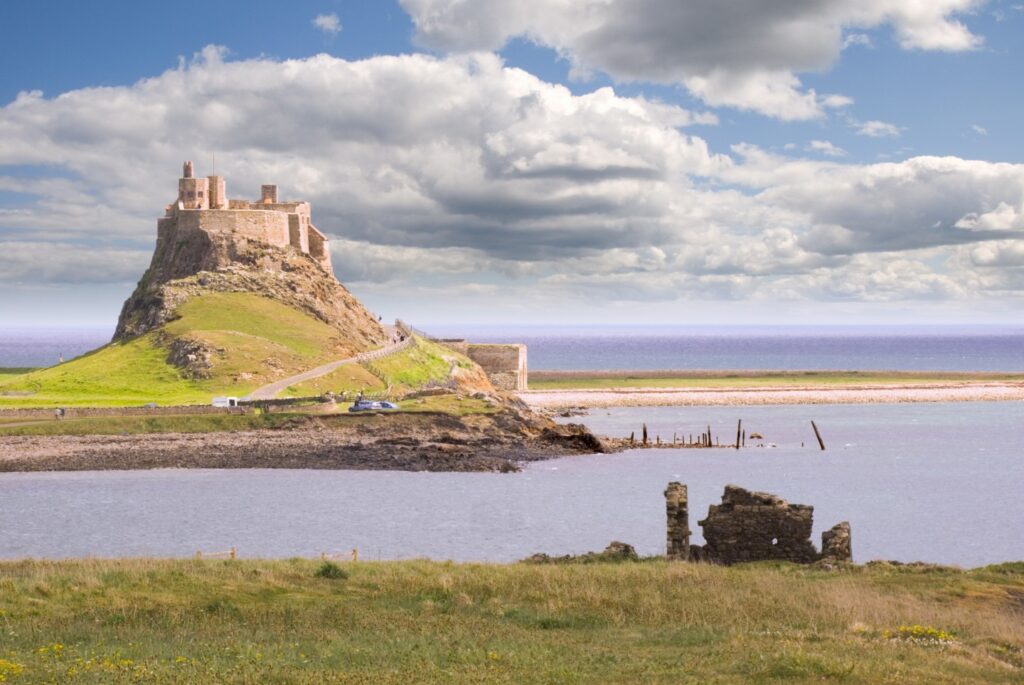Nestled off the northeast coast of England, the Holy Island of Lindisfarne is a captivating destination that offers a unique blend of natural beauty, rich history, and spiritual significance. This tidal island, accessible only at low tide, is a place where time seems to stand still, inviting visitors to explore its serene landscapes and historical landmarks. Whether you’re a history enthusiast, a nature lover, or simply seeking a peaceful retreat, Lindisfarne promises an unforgettable experience.
What to See on Lindisfarne
Lindisfarne Castle is one of the island’s most iconic landmarks. Perched atop a rocky hill, this 16th-century fortress offers panoramic views of the surrounding coastline. The castle’s interior, redesigned by architect Edwin Lutyens in the early 20th century, provides a glimpse into its storied past. Nearby, the Gertrude Jekyll Garden, with its vibrant blooms and carefully curated design, is a must-see for garden enthusiasts.
The Lindisfarne Priory, founded in the 7th century, is another highlight. These atmospheric ruins tell the story of the island’s early Christian heritage and its role as a center of learning and spirituality. The Lindisfarne Gospels, an illuminated manuscript created here, is a testament to the island’s historical significance.
For nature lovers, the Lindisfarne National Nature Reserve offers a chance to explore diverse habitats, from sand dunes to salt marshes. Birdwatchers will be delighted by the variety of species that call this area home, especially during migration seasons.
A Bit of History and Interesting Facts
Lindisfarne has a rich history that dates back to the early medieval period. It was founded by Saint Aidan in 635 AD as a center for Christian evangelism. The island became a significant religious site, attracting pilgrims from far and wide. However, its peaceful existence was disrupted in 793 AD when it became the target of one of the first Viking raids, marking the beginning of the Viking Age in Europe.
An interesting fact about Lindisfarne is its unique tidal nature. The island is connected to the mainland by a causeway that is submerged at high tide, making it accessible only at specific times. This natural phenomenon adds to the island’s mystique and requires careful planning for visitors.
Getting There and Tips for First-Time Visitors
Reaching the Holy Island of Lindisfarne requires a bit of planning due to its tidal nature. The island is accessible via a causeway from the mainland town of Beal. It’s crucial to check the tide times before your visit, as the causeway is only passable during low tide. Tide tables are available online and at local tourist information centers.
For those visiting for the first time, it’s advisable to arrive early to make the most of your time on the island. Parking is available on the mainland side of the causeway, and a shuttle bus operates during peak tourist seasons. Alternatively, you can enjoy a scenic walk across the causeway if the weather permits.
Once on the island, take your time to explore its attractions. The village of Lindisfarne offers charming shops and cafes where you can sample local delicacies, including the famous Lindisfarne Mead. Remember to dress appropriately for the weather, as conditions can change quickly.
In summary, the Holy Island of Lindisfarne is a destination that offers a unique blend of history, nature, and spirituality. Its tidal nature adds an element of adventure, making it a memorable experience for all who visit.








